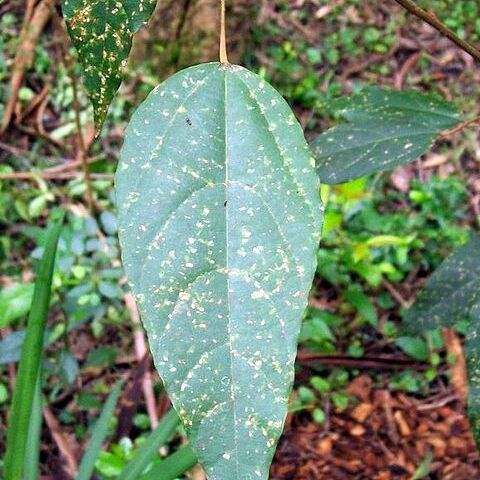Shrub or small tree to 15 m high; evergreen. Stems ± rounded towards apices, with dense, clear, simple or biseriate hairs and scattered yellow sessile glands when young, glabrescent. Leaves alternate, not peltate; lamina lanceolate-ovate, obovate or ovate, 10–110 mm long, 5–70 mm wide; base cuneate, rounded or truncate; margins entire or weakly sinuate; tip acute, short acuminate; venation palmiveined, comprising 2 veins from the lamina base, 5–8 lateral veins per side of midrib and reticulate interlateral veins; upper surface without granular inclusions; lower surface pale green to silver-green, interlateral veins just visible, with dense, clear, simple, biseriate and/or stellate hairs and sparse yellow sessile glands, indumentum persistent. Stamens 24–38. Fruit subglobose, 5–8 mm long, 7–10 mm diam., with dense, yellow to yellow-orange sessile glands, hairs and echinate processes absent.
More
A shrub or small tree. It grows 15 m high. They bark is smooth and grey. The leaves are oval and 10 cm long. They are dark green above and whitish underneath. The flowers are small and grey. They are in sprays 10 cm across. The male and female flowers are separate. The fruit are small and bright yellow. They are in segments and fleshy.


